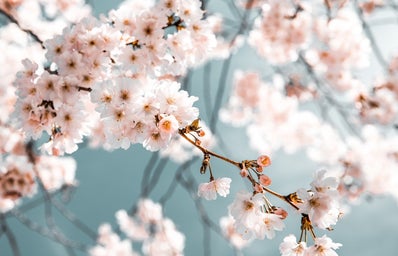It’s the first day of spring, and the first day of a new year. A table has been set downstairs with the traditional representations of good fortune, an altar for success in the year ahead. Our new goldfish swims in his bowl at the center, the symbol of life within infinite life. A hyacinth blooms, eggs are painted, and the little lentil sprouts my mom has been cultivating for a month stand tall, proud, and green. Persian New Year, Nowruz, is my favorite day of the year, the day where we remind ourselves of our higher spiritual purpose, of the chance of rebirth and new beginnings.
Living in America, our most prominent, universal Spring holiday is Easter, possibly followed by Mother’s Day. But being a Persian-American, I’ve learned to love Nowruz as my favorite holiday. Celebrated on the Spring equinox each year, Nowruz marks the first day of the Iranian calendar and serves as a beginning to building a year better than the last. Literally meaning “new day” in Farsi, Nowruz is a day to pray and prepare for a year filled with happiness and good fortune, while also acknowledging our significant connection to nature, life, and faith.
The history of Persian New Year goes back so far that no one is entirely certain when it began. We do know that its beginnings are rooted in Zoroastrianism, an ancient Persian religion so old that it predates Christianity and Islam. According to ancient poetry, the mythical Persian King Jamshid declared the first day of Spring as a celebratory “new day,” as it brought warmth and happiness after a cold, long winter. Today, Nowruz is celebrated by millions of people around the world, in dozens of countries along the Silk Road and beyond; in 2010, the UN recognized it as an international holiday.
Nowruz today is typically celebrated through gift giving with friends and family, as well as setting up a sort of altar, called the table of “Seven S’s.” This table is set with at least seven things that begin with the letter “S” in Farsi, among other symbols of good health and fortune. For example, the seven S’s can include: Samanu pudding, vinegar, hyacinths, garlic, apples, coins, and lentil or wheat sprouts; meanwhile, common other objects include mirrors to represent reflection into the future, goldfish to represent life, and painted eggs to represent fertility. Displayed on traditional tablecloths, this spread is usually the centerpiece of Nowruz celebrations, with families gathering to read the Quran and pray for a prosperous year ahead (and exchange gifts, of course).
This year, Persian New Year is celebrated on March 20th, and will mark the year 1400 in the Iranian calendar. So, if you know someone who celebrates it, wish them a Happy New Year; or, even if you’re not Persian, go ahead and pull out your table, mirror, and goldfish and paint some eggs yourself. Celebrations like these are for people of all cultures and backgrounds, as long as you’re willing to educate yourself on what they really mean. Eid-e Nowruz Mubarak!


